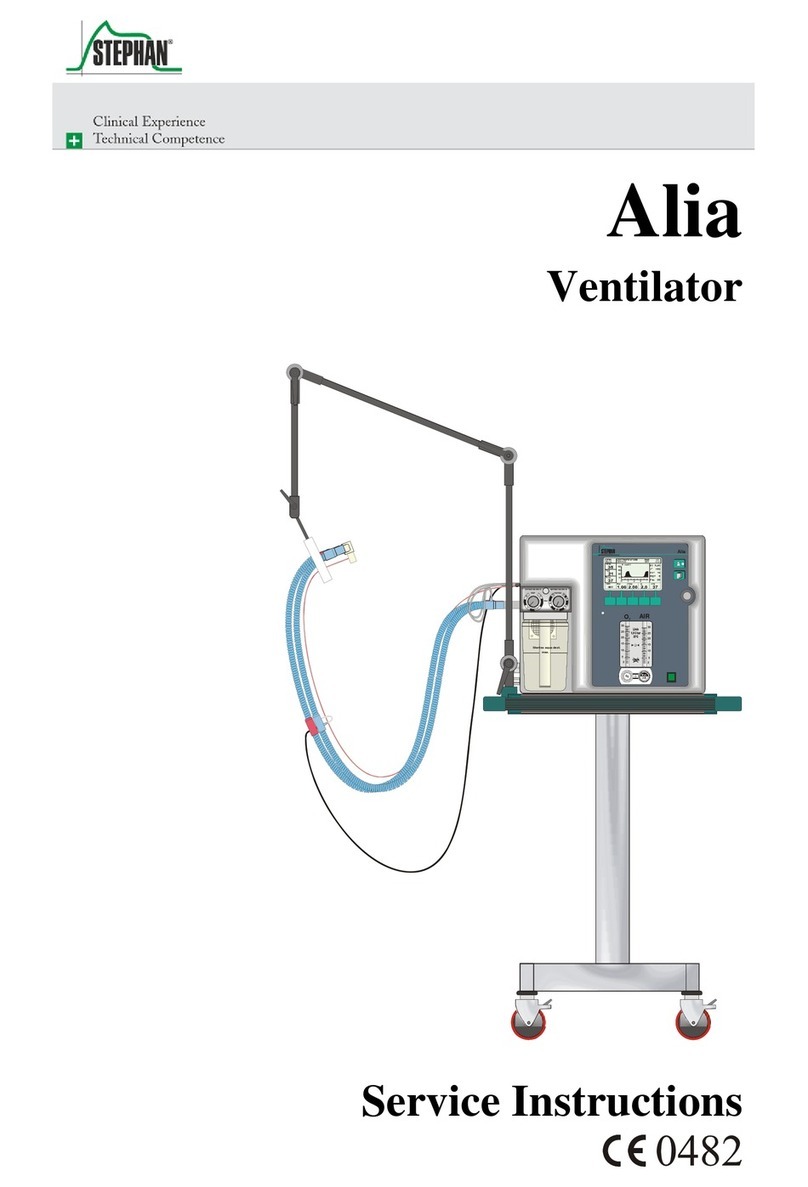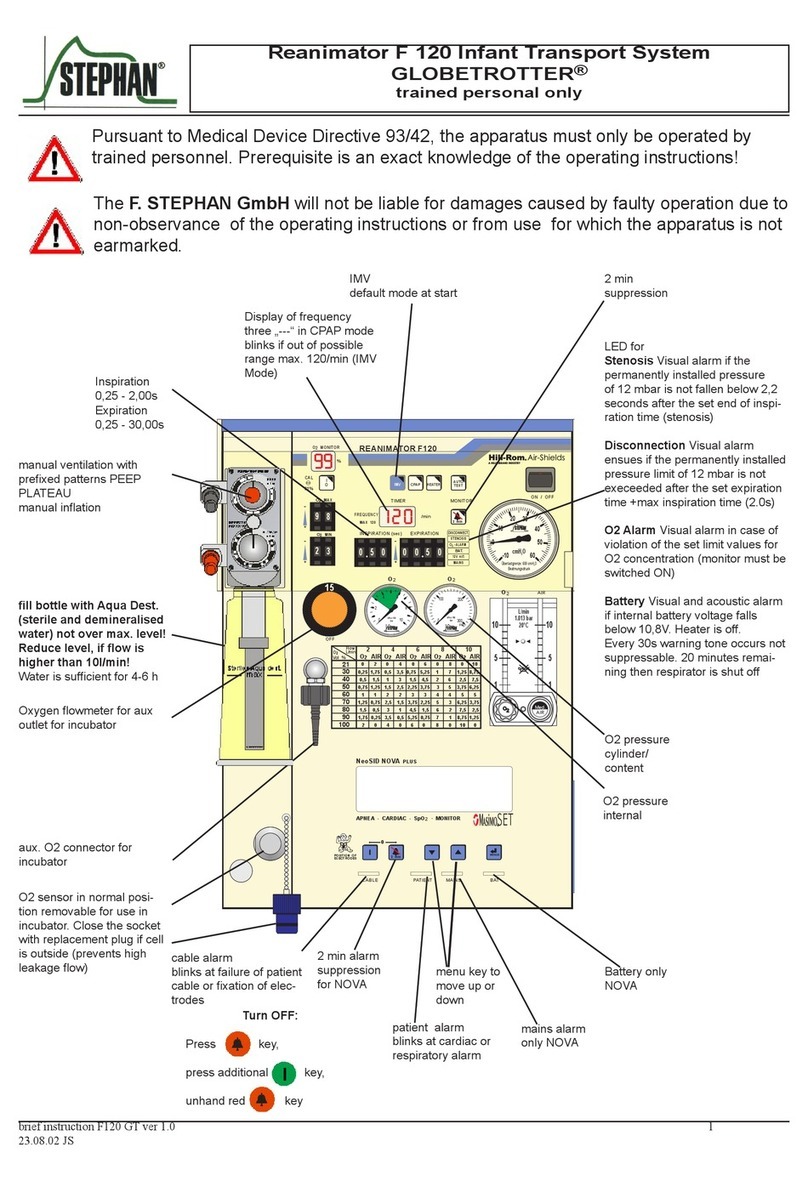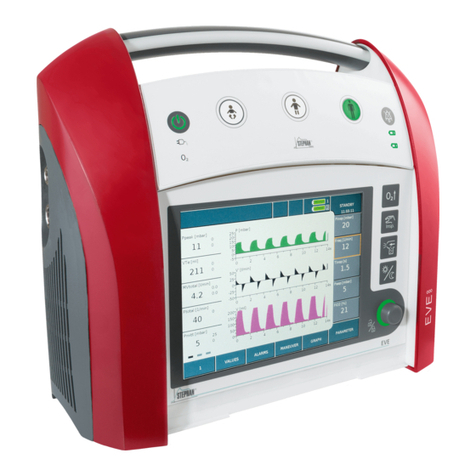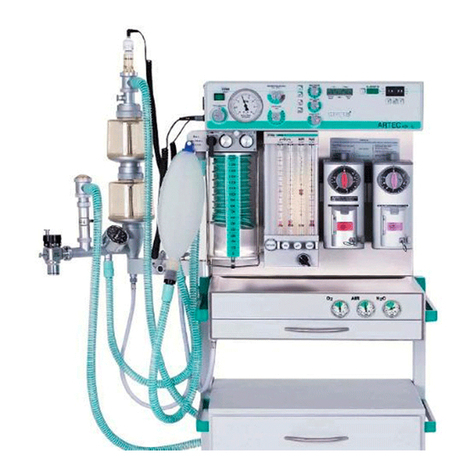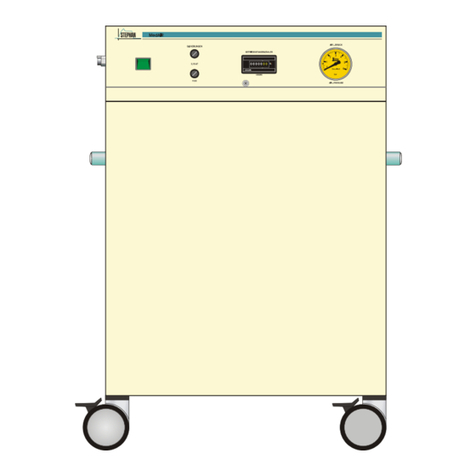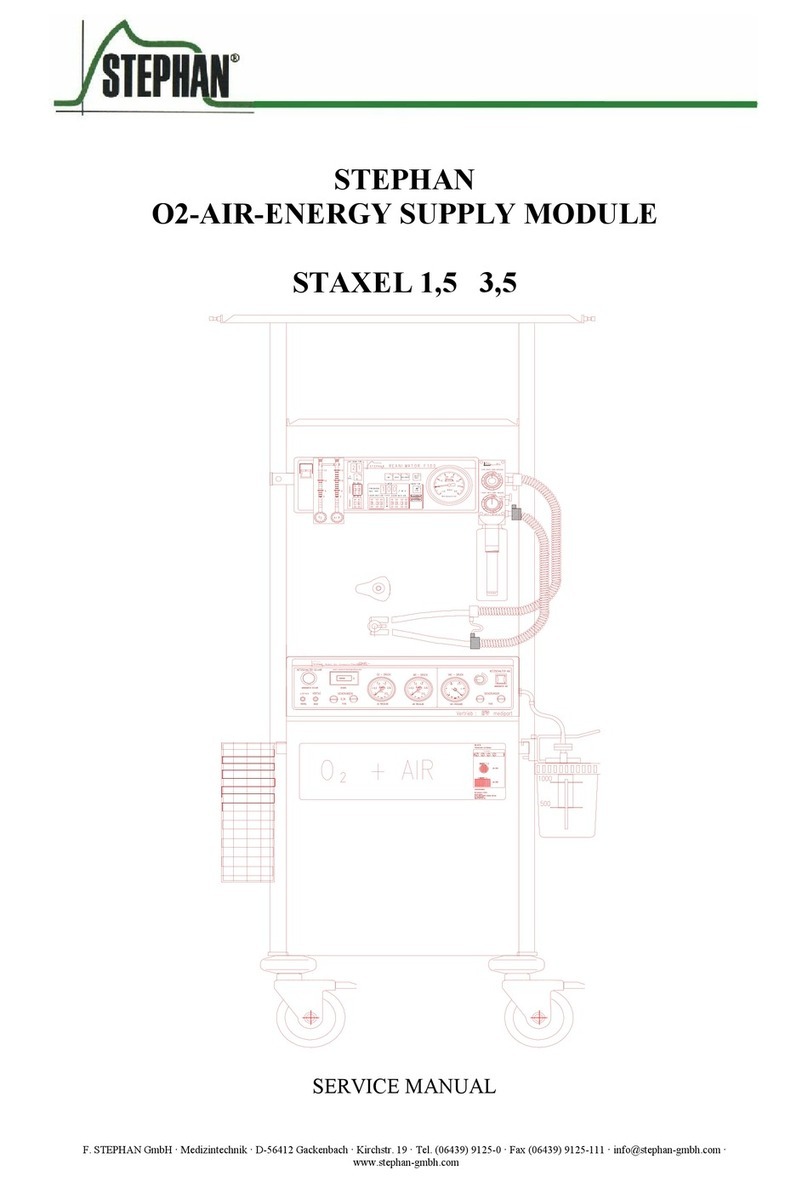
Operating Instructions Artec
5
1 General Information
The Medical Equipment Regulations (MedGV), and the law on technical medical working
materials (MPBetreibV) stipulate that the attention of the operator must be drawn to the
following:
The operation of the Unit must be carried out only by qualified personnel. Exact knowledge
and understanding of the Operating Instructions is a pre-conditioned for operation.
Use of the equipment is solely for that as stipulated in the Operating Instructions.
Inspections and servicing must be duly entered in the Logbook of the Unit. The Equipment
must be inspected at regular intervals by qualified personnel only.
F.Stephan GmbH stipulates a half-yearly inspection and maintenance by one of its
authorized Service Technicians.
Before each use of the unit, a complete function test of the unit must be carried out.
In the case on medico.technical devices with electrical connection, the standards of
particular VDE 0751 and IEC 601 must be closely complied with. According to these
standards, such devices may only be set up and put into operation by the manufacturer or
his expressedly authorized technician or dealership.
Unit equipped with a pressure reducer should undergo a basic overhaul at least every 5
years for reasons of safety.
An emergency ventilation system (e.g. Ambu-Bag) must always be in close proximity of
the unit.
F. Stephan shall assume no responsibility or liability for any damage or defects arising
from non-observance of the above-mentioned information.











